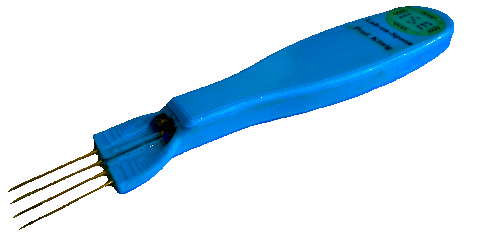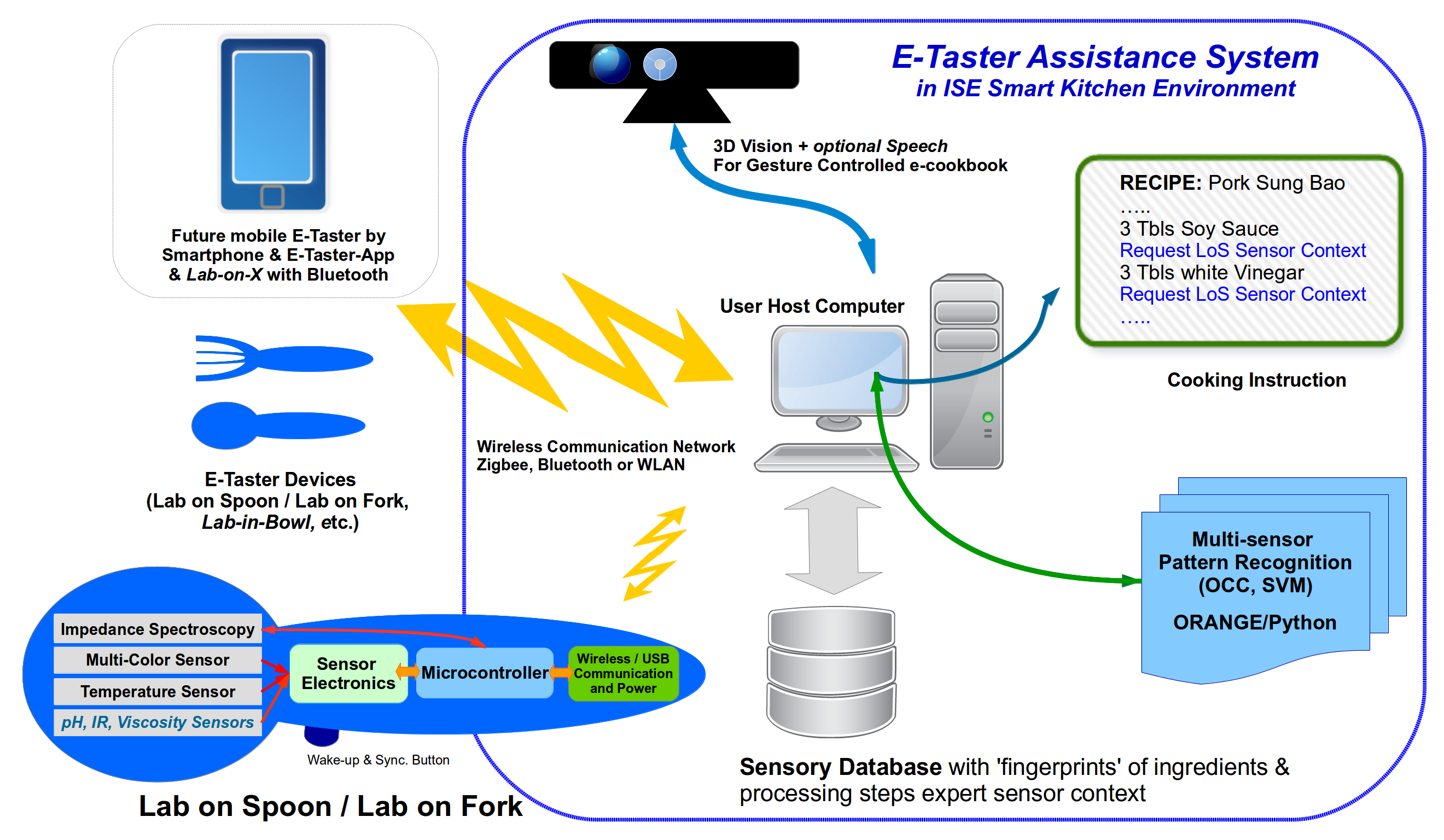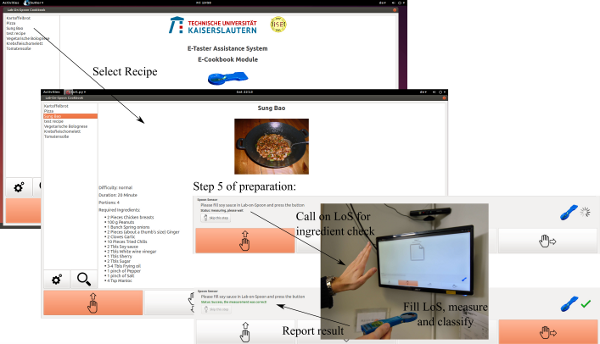The E-Taster
Assistance System with Lab-on-Spoon
and Lab-on Fork as
'Electronic Tongues'
Subject:
Daily life activities of food
preparation
can be challenging for consumers due to restricted skills and
experience,
loss of perceptive abilities (accident/aging) or due to product fraud
and contaminations, commonly summarized under the term of food
adulteration, which are exceeding human perceptive
abilities in general. Thus, in our work the
E-Taster-assistance-system for living assistance and food safety was
conceived.
Autonomous, multisensory, wireless measurement systems
(Lab-on-Spoon/-Fork, LoX), which have been embodied as items of daily
use,
deliver as 'electronic tongues' sensory context for the required
assistance. These integrated sensory systems can be understood as
Internet of Things (IoT) devices and they have implemented based on the
Arduino platform, which has established itself as a common choice for
IoT solutions. The E-Taster system includes an electronic
cookbook, that interacts with the multispectral LoX devices and also
has special functions for sustainable use of food. For the rapid and
dependable extension and
adaptation to
increasing tasks the DAICOX- System for the automated design of
optimized technical cognition systems will be presented in
the context of the E-Taster-system and Lab-on-Spoon application. The
E-Taster project offers both a solution for the underlying mass
market at
the end of the food chain and with the DAICOX system a general tool for
the rapid design of
intelligent IoT- and related systems. It was presented to public on
CeBIT 2015,
hall 9,
booth D23 of Rhineland-Palatina and at
SENSOR+TEST 2015, MAZet booth hall 12/386. Reports in the media have been in
Rheinpfalz, 28th of April, 2015, in the
SWR web and
Landesschau Aktuell on Friday, 29th of May 2015.
Abstract:
Since ancient times the ones in power always had
to fear the poisoning of their food to deprive them of power and life.
Employing a taster to check every meal and dish before consumption was
a common counter measure. These days, the problem of dangerous food due
to contamination or adulteration has aggravated and broadened to the
average consumer. Though there are common and quite numerous cases of
unintentional contamination of of food, an increasing amount of
profit driven activities to extend food sales quantity by cheap and in
many cases very dangerous additives can be found. Some examples of
increasing danger for the consumer are, e.g., injection of water in
meat or fish to increase weight, mixing of salt or spice powders
with various cheap additives, sweetening wine by
anti-freezing agent (diethylen glycol), or the sale of recycled ot
otherwise generated questionable oils as frying oil. an increasing
number of these food falsifications or adulterations could be detected
by contemporary sensory systems taking the role of the taster for the
average consumer. In particular, integrated sensory systems allow the
embodiment of such functionality in the shape of ordinary items of
daily life, e.g., spoons, forks, bowls etc.
In our work we have conceived the E-Taster Assistance System, that
employs devices such as, e.g., Lab-on-Spoon, to
assess ingredients and also procesing step results in food
preparation. Thus, the E-Taster Assistance System can serve in
Ambient-Assisted-Living-Scenarios to support users challenged by
illness, age, or accident in assessing correctness, pureness, and
freshness of ingredients and of food processing steps. Further,
problems due to food adulteration, possibly out of human preceptive
capability, can be detected and put to the attention of the consumer.
The following figure shows the block diagram of our E-Taster Assistance
System:
The current stationary version of our E-Taster
Assistance System bases on a smart-kitchen-server, which runs a system
to communicate with the user, instrumented devices, a dedicated
database, efficient pattern recognition. A key module is an electronic
or e-cookbook with a recipe collection, that is controlled by gestures
and employs speech output and possibly input. The e-cookbook collects
sensor context from, e.g., Lab-on-Spoon, or other devices for the
recipe steps. The Lab-on-Spoon has been conceived in prior work (CeBIT
2014) for liquid food analysis and has been extended now to
multispectral analysis capability. It bases on the popular Arduino
platform, that is enjoying increasing acceptance for IoT device
implementation. The following block diagram shows the architecture of
the new multispectral Lab-on-Spoon, which will be presented to public
at CeBIT 2015:
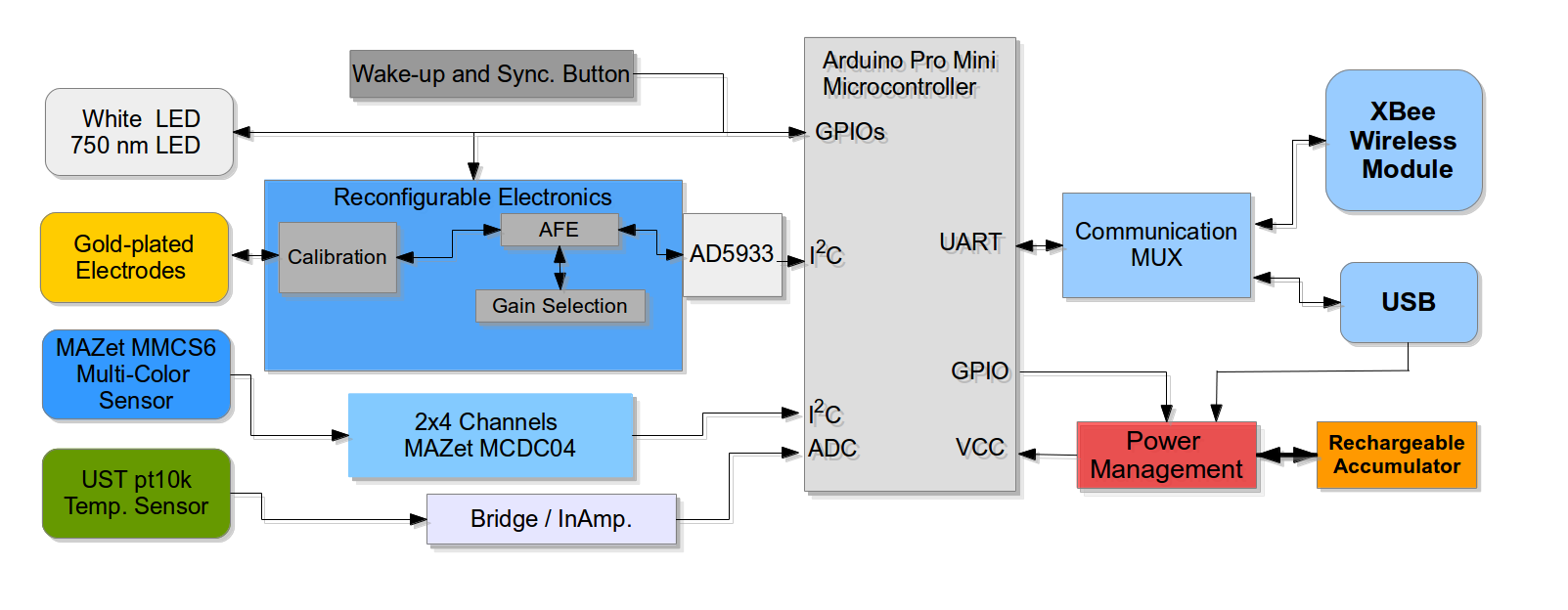
The multispectral Lab-on-Spoon (LoS-MS) is
conceived as a 3.3 V system based on an Arduino Pro Mini (3.3V, 8 MHz).
It offers temperature sensing, multicolor sensing, and impedance
sensing. This achieved by a UST Pt10k sensor and readout circuit,
a MAZet MCS6CS multicolor sensor with two MCDC04 readout
chips, and AD5933 based impedance measurement in the range up to
100 kHz. The LoS-MS is equipped with active illumination and background
light canceling. A white light LED and a 750 nm LED are employed in two
cycles, as, e.g., the Center-Diode of the MCS6CS shows exploitable
sensitivity for that wavelength. Communication with the server and the
E-Taster Assistance System is achieved either by USB or wireless
by the XBee interface. The autonomous Los-MS includes an
Li-Po-accumulator, that will be charged via the USB connector. As the
employment of the MAZet MCDC04 was not possible due to the
Repeated-Start-Protocol, the LoS-MS system has been implemented based
on the SoftI2C-Library. A simple Arduino program for the MCS6CS by two
MCDC04 will be provided HERE after CeBIT 2015. The following annotated
photo shows a LoS-MS with an
open package and indications the named components of the autonomous
measurement system:

The e-cookbook of the E-Taster Assistance System
requests the user at appropriate steps of food preparation to
fill the expected ingredient in the spoon and press the LoS-MS button
for confirmation. This 'handshake' procedure prevents ambiguous
situations, e.g., empty spoon or spoon filled by a mixture of residuals
of previous ingredients. The requested sensory context of LoS-MS will
be transfered to a pattern recognition module in the e-cookbook of the
E-Taster system, processed, and a a decision will be made by a
previously designed classification system. The user will be informed on
the outcome of the test. The following picture shows the encapsulated
autonomous LoS-MS ready for measurement:
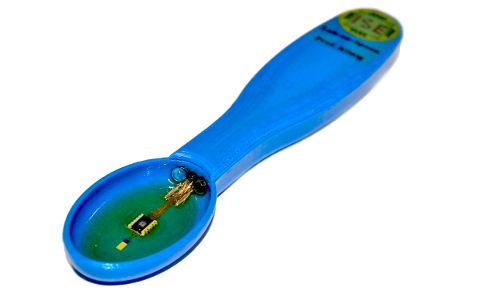
The e-cookbook of the E-Taster system is
demonstrated in the following composite picture for the example of a
simple Chinese dish, called chicken Sung Bao, where the
e-cookbook calls on sensor context at certain steps, exemplified here
by steps, where soy sauce or vinegar shall be added to the sauce of the
dish:
In addition to LoS-MS, a Lab-on-Fork (LoF-MS)
for probing
solid food, e.g., meat, cheese, etc. has been developed, which
basically has the same sensing capability. The majpr difference is,
that temperature and impedance are now associated with the fork's
teeth, while the multicolor sensor was rotated by 90 degrees and
changed the mode of operation from transmitted light or scattered light
measurement to reflected light measurement. The following picture shows
a LoF-MS USB-prototype before encapsulation:

The LoF-MS is demonstrated for one example of
fish identification with three kinds of fish, i.e., tuna, salmon, and
zander. The LoF-MS has been employed to measure three filets
or chops from the named kind of fish, measuring both multi-channel
color and impedance spectrum. The following picture shows the
underlying measurement objects and the resulting feature space computed
from both sensory channels, which shows clear discernment
capability. Each individual sensory channel showed for itself
suitable discerment capability. Thus, authenticity of the expected fish
kind, with potentially quite different price tag than possible
substitutes, can be obviously be checked. Freshness grading of the fish
will be next in the LoF-MS investigations. Extensions to meat,
cheese, etc. will also be regarded.
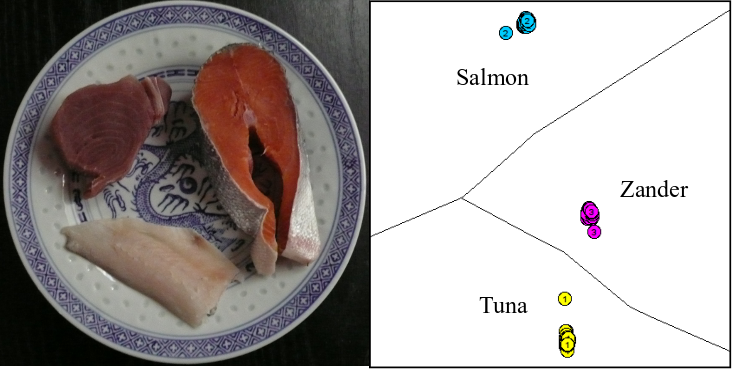
The
scope of the considerations have further been extended by LoF-MS to the
investigation of powders, such as spice powders, coffee, tea, salt etc.
A common problem in food adulteration is, that more or less dangerous,
cheap additives are added to the original ingredient to increase sales
profit. The following figure shows impedance magnitude data for the
common example of adding chalk powder to salt for this purpose,
where the three clusters indicate pure salt, pure chalk powder, and a
1:1 mixture:
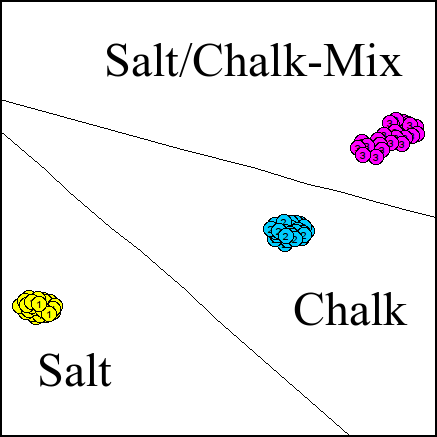
The E-Taster system and the 'electronic tongues'
Lab-on-Spoon and Lab-on-Fork in their recent multispectral and
autonomous version are presented to public at CeBIT 2015
in hall 9, booth D23 of
Rhineland-Palatina. The following pictures from the CeBIT booth show the
visit of the minister of the MSAGD ministry of Rhineland-Palatina, Mrs. Sabine Bätzing-Lichtenthäler, and the visit of the secretary of state of the MBWWK ministry for science and technology of Rhineland-Palatina, Prof. Dr. Thomas Deufel, where the
e-cookbook application of the Lab-on-Spoon and contamination detection in powders, e.g., salt, by Lab-on-Fork, were presented as life demos:
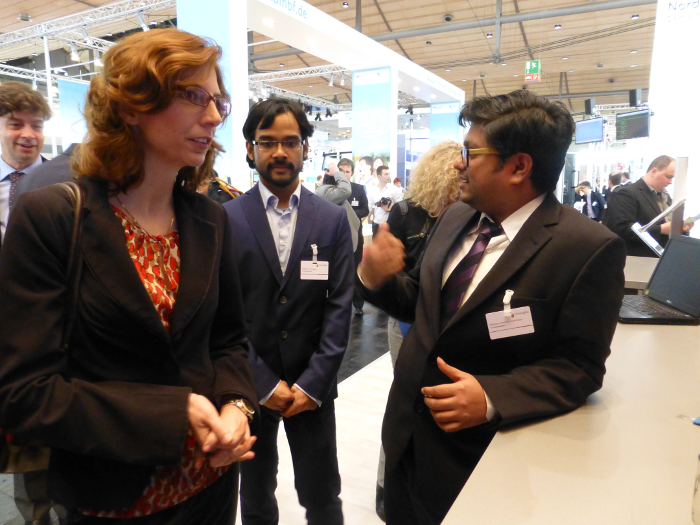
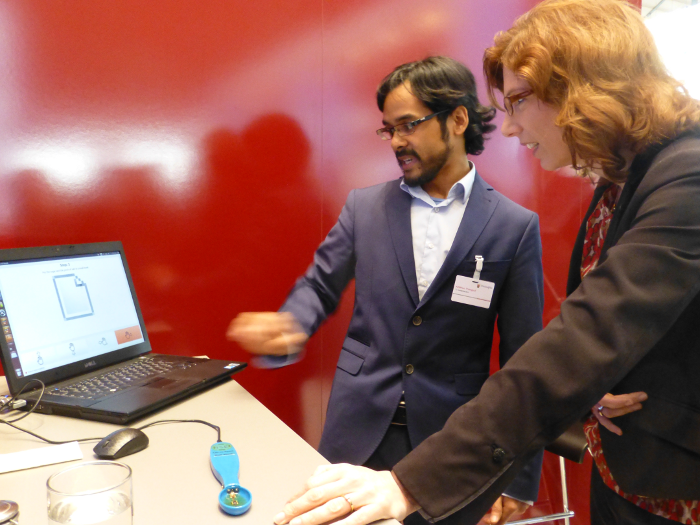
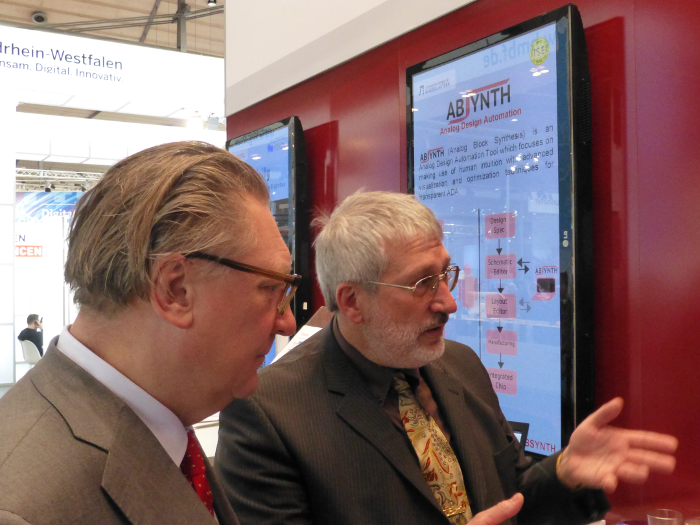
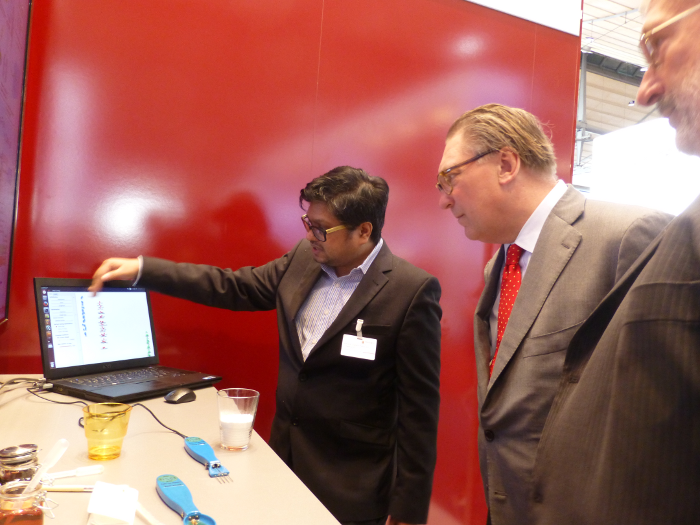
- Addition of pH-value and viscosity sensing to be able to assess
food liquids, solids, and powders.
- Create a mobile smartphone-based version of the system with an
E-Taster App
- Marketing of the
idea to transfer it into a product
- Extend self-x features for accurate as well as dependable
sensory systems, a prerequisite demanded, e.g., for Cyber-Physical-Systems
(CPS) etc. This comprises the ability to self-calibrate by switching
from reference element to electrodes and back as well reconfiguring the
range, transduction etc. In particular, MEMS DC-switches are regarded
as an interesting resource for this research aim
- Investigation of alternative/complementing 3D
integration/packaging (System-in-Package, SiP) technologies for
seamless integration & merging of every day life devices with
sensors & electronics. In particular, advanced 3D-printing services
with higher resolution, higher temperature tolerance, and food safety
regulation compliance are in the focus here
- Design of a more able chip for Integrated-Impedance-Spectroscopy
with a sweep range up to 3.25 MHz for Lab-on-Spoon
and Medical Applications
- Complete integration of low-cost low-power spoon with all
regarded sensing
modalities, e.g., IIS, color, T, pH, viscosity, and
energy harvesting/management, e.g., by adding a solar or thermal
harvester.
- Transfer to other application domains and ISE activities, e.g.,
general in-situ oil quality monitoring
Sponsoring
The major color sensor manufacturer
MAZeT has been attracted as sponsor
to the Lab-on-Spoon project and supports us, in particular, with the
most recent multispectral MMCS6CS sensor for our current multispectral
Lab-on-Spoon
version.

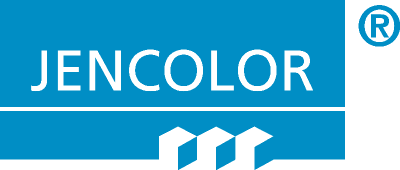
| |
Status: |
|
Running, duration
04/01/2014 - today |
| |
Partners: |
|
- |
| |
Financing: |
|
Self-funded research |
| |
PI/Contact: |
|
Prof. Dr.-Ing. Andreas
König |
| |
Contributors: |
|
Prof.
Dr.-Ing. Andreas
König (Conception of the
general E-Taster architecture, Lab-on-Spoon, and Lab-on-Fork and their
phyiscal implementation, applications, and measurements.)
M.Sc.
Kittikhun Thongpull (Autonomous
Lab-on-Spoon/Fork functionality implementation, intelligent system
design with sensor fusion, dimensionality reduction, hierarchical
classification, and anomaly detection, E-Taster integration, and
applications),
Simon
Hook, Marius Gräfe, Johannes Bayer, and Simon Böhm (E-cookbook
module with Kinect-based gesture control and Lab-on-Spoon interface for
sensor context acquisition during cooking process.),
M.Sc.Abhaya
Chandra Kammara (Kinect-based
gesture control development for
e-cookbook and other related support.)
Technical
support:
The packages of the autonomous LoX devices have been designed and
printed by F. Witthaus, TU central workshop, and the layout of the AFE
board has been designed by M. Schultheis.
|
| |
Publications: |
|
|
| |
|
|
|
| |
|
|
A.
König, K. Thongpull, "Lab-on-Spoon - Vorkoster mit elektronischer
Zunge", Elektronik Messen+Testen, WEKA-Fachmedien, 5/2015, S. 46-49 .
|
| |
|
|
K.
Thongpull, D. Groben, A. König, "A Design Automation Approach for
Task-Specific Intelligent Multi-Sensory Systems - Lab-on-Spoon in Food
Applications" tm - Technisches Messen. Volume 82, Issue 4, Pages 196–208, ISSN (Online) 2196-7113, ISSN (Print) 0171-8096, DOI: 10.1515/teme-2014-0009, April 2015
|
|
| |
|
|
|
|
| |
|
|
|
|
| |
|
|
|
|
| |
|
|
|
|


